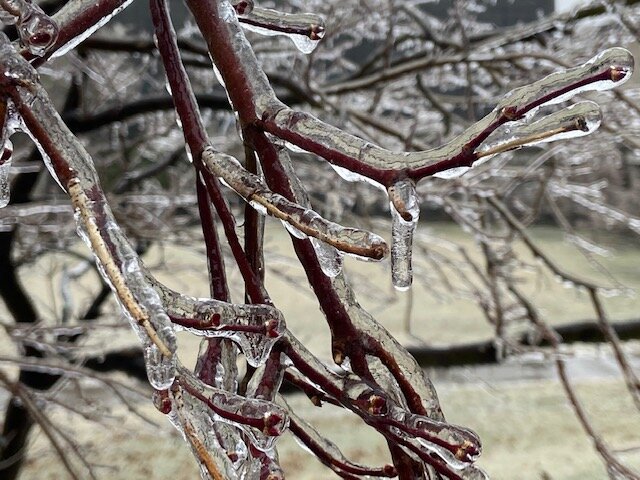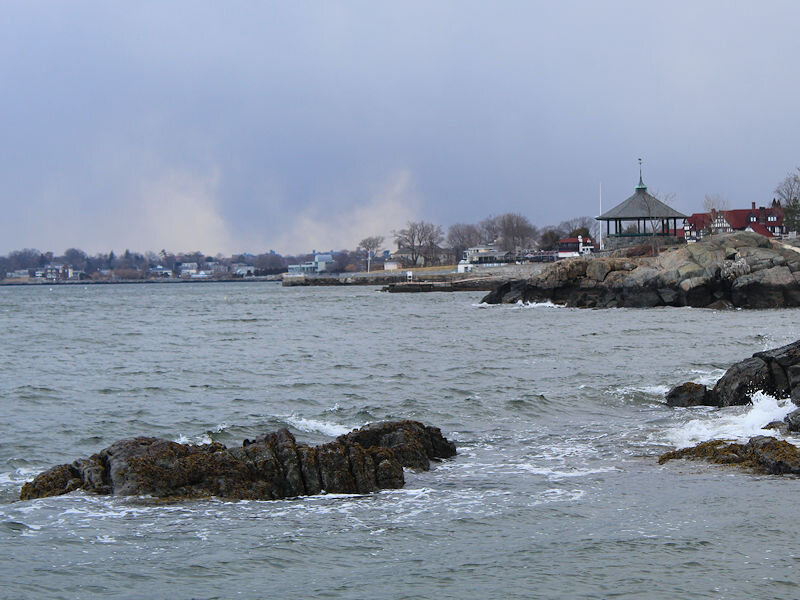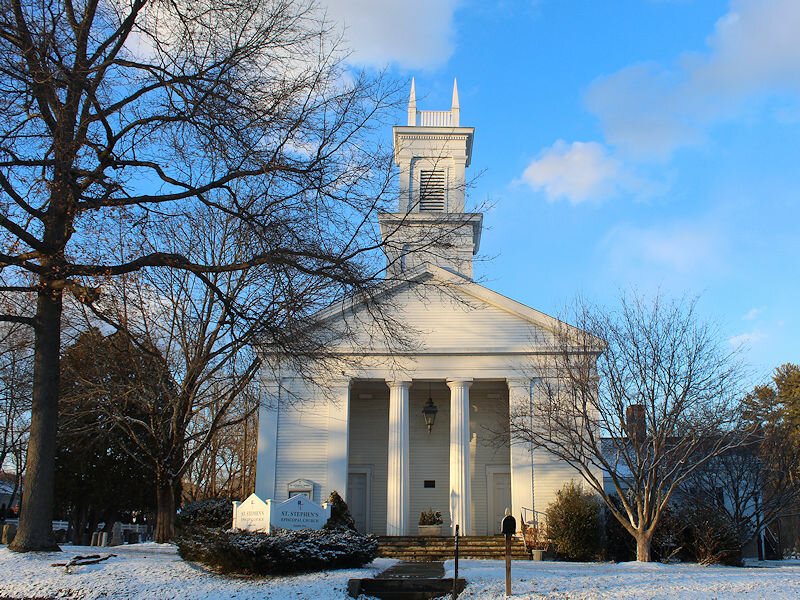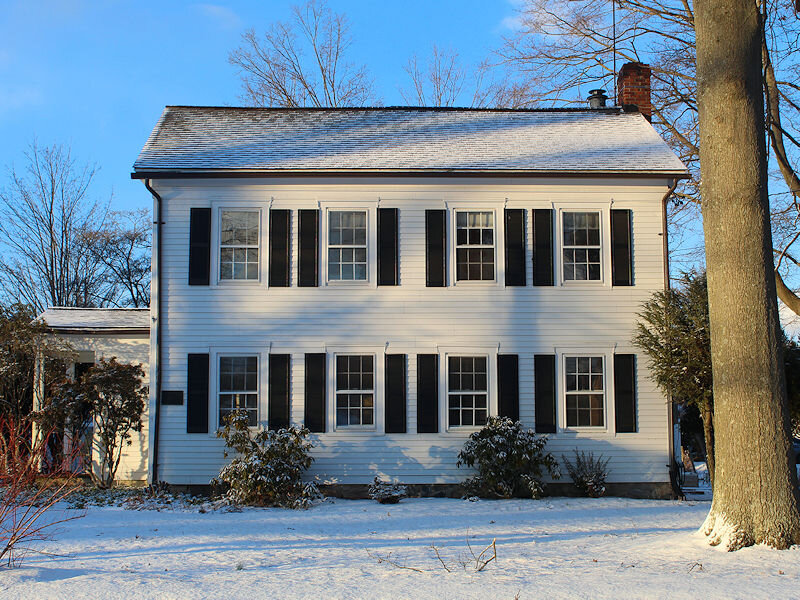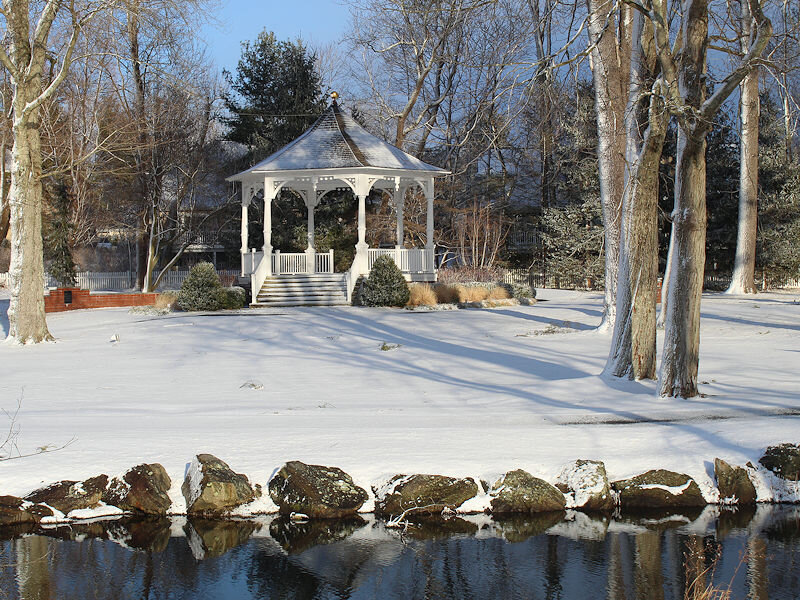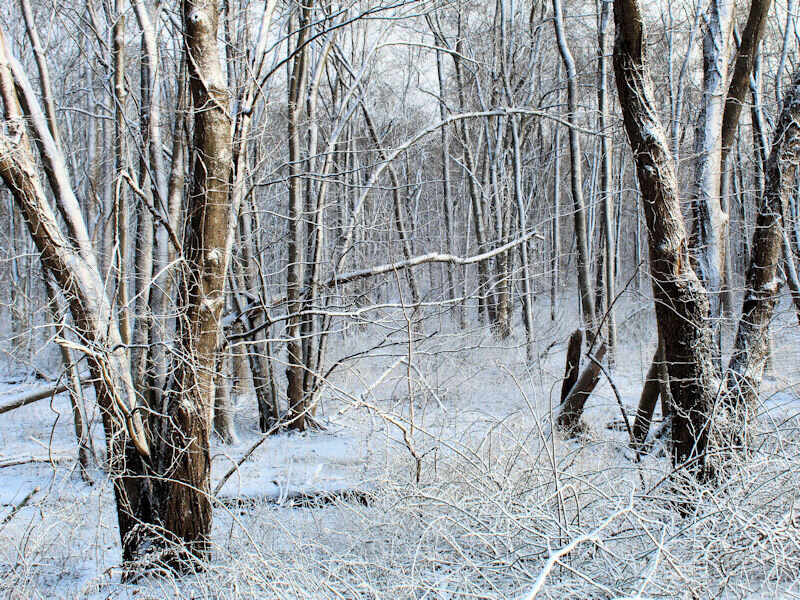-
Posts
23,211 -
Joined
Content Type
Profiles
Blogs
Forums
American Weather
Media Demo
Store
Gallery
Everything posted by donsutherland1
-

February 24/25 Potential Winter Storm
donsutherland1 replied to mikem81's topic in New York City Metro
-
Late tonight through tomorrow, interior sections of the Northeast will be in line for accumulating snow. A general 4"-8" with locally higher amounts of up to a foot is likely there. Despite some GFS runs previously showing 4" or more snow for New York City, the forecast pattern generally argues against such an outcome. During the February 20-29, 1950-2021 period, 4/13 (31%) of 4" or greater snowstorms saw a positive AO. The evolution of synoptic details will determine the outcome and, at present, most of the guidance argues against a moderate snowfall in and around New York City. Generally 1" or less is likely in New York City and Newark prior to a changeover to sleet and then rain. Overall, things remain on course for a warmer than normal second half of February. The potential exists for several days to see much above normal temperatures during that time. The warm pattern will likely begin to break down during the closing days of February. The closing days of February into the first week of March will be generally colder than normal. March could start with a sharp cold shot. The ENSO Region 1+2 anomaly was -1.7°C and the Region 3.4 anomaly was -0.6°C for the week centered around February 16. For the past six weeks, the ENSO Region 1+2 anomaly has averaged -0.90°C and the ENSO Region 3.4 anomaly has averaged -0.70°C. La Niña conditions will likely persist into at least mid-March. The SOI was -0.96 today. The preliminary Arctic Oscillation (AO) was +1.906. On February 22 the MJO was in Phase 3 at an amplitude of 1.501 (RMM). The February 21-adjusted amplitude was 1.617 (RMM). Based on sensitivity analysis applied to the latest guidance, there is an implied 94% probability that New York City will have a warmer than normal February (1991-2020 normal). February will likely finish with a mean temperature near 37.1° (1.2° above normal).
-
Morning thoughts… Clouds will increase and it will be much colder today. Snow will arrive in the northern Mid-Atlantic region tonight. High temperatures will likely reach the middle and upper 30s in most of the region. Likely high temperatures around the region include: New York City (Central Park): 37° Newark: 37° Philadelphia: 39° Snow will change to sleet, freezing rain, and rain in much of the region early tomorrow. Interior sections will likely see 4”-8” with some locally higher amounts. 1”-2” is likely in and around New York City. Normals: New York City: 30-Year: 44.1°; 15-Year: 44.3° Newark: 30-Year: 45.1°; 15-Year: 45.3° Philadelphia: 30-Year: 46.5°; 15-Year: 46.3°
-
The AO has been positive for 44 of the last 50 days. JFK has only reached 70 on one occasion in February: 71 on February 27, 1997.
-
Clouds yielded to sunshine and temperatures soared to unseasonably warm levels today. A number of locations reached or surpassed their existing daily records. Daily records included: Atlantic City: 72° (tied record set in 1985 and tied in 2017) Bangor: 65° (old record: 57°, 1984) ***New Monthly Record*** Boston: 69° (old record: 68°, 2017) Bridgeport: 67° (old record: 60°, 2012) Hartford: 71° (old record: 68°, 1990) Islip: 68° (old record: 61°, 2012) Manchester, NH: 68° (tied record set in 2017) New Haven: 67° (old record: 57°, 2012) New York City-JFK: 69° (old record: 62°, 1990) New York City-LGA: 68° (old record: 66°, 1985) Newark: 70° (old record: 68°, 1985) Portland: 66° (old record: 61°, 1990) Providence: 69° (old record: 66°, 2017) White Plains: 67° (old record: 65°, 1985 and 1990) Wilmington, DE: 74° (old record: 73°, 2017) Worcester: 65° (old record: 64°, 2017) In addition, Baltimore reached 76° and Washington, DC hit 77° today. Both temperatures fell just short of their daily record of 78°, which was set way back in 1874. Cooler weather will return tomorrow. Late tomorrow night through Friday, interior sections of the Northeast will be in line for accumulating snow. A general 4"-8" with locally higher amounts of up to a foot is likely there. Despite some GFS runs showing 4" or more snow for New York City, the forecast pattern generally argues against such an outcome. During the February 20-29, 1950-2021 period, 4/13 (31%) of 4" or greater snowstorms saw a positive AO. The evolution of synoptic details will determine the outcome and, at present, most of the guidance argues against a moderate snowfall in and around New York City. Instead a light snowfall, possibly in the 1"-3" range with some locally higher amounts is on the table prior to a changeover to sleet and then rain. Overall, things remain on course for a warmer than normal second half of February. The potential exists for several days to see much above normal temperatures during that time. The warm pattern will likely begin to break down during the closing days of February. The closing days of February into the first week of March will be generally colder than normal. March could start with a sharp cold shot. The ENSO Region 1+2 anomaly was -1.7°C and the Region 3.4 anomaly was -0.6°C for the week centered around February 16. For the past six weeks, the ENSO Region 1+2 anomaly has averaged -0.90°C and the ENSO Region 3.4 anomaly has averaged -0.70°C. La Niña conditions will likely persist into at least mid-March. The SOI was +5.00 today. The preliminary Arctic Oscillation (AO) was +2.801. On February 21 the MJO was in Phase 4 at an amplitude of 1.616 (RMM). The February 20-adjusted amplitude was 1.464 (RMM). Based on sensitivity analysis applied to the latest guidance, there is an implied 85% probability that New York City will have a warmer than normal February (1991-2020 normal). February will likely finish with a mean temperature near 37.1° (1.2° above normal).
-
It's looking promising. It also fits the timing of some recent cases where strongly positive February AO+ regimes broke down in March.
-
At Bangor, the 11 am temperature was 62. That surpassed the daily record of 57 from 1984 and the longstanding monthly record of 60 from February 21, 1937.
-
Morning thoughts… Clouds will give way to sunshine. It will be very warm. Parts of the region will approach or set new daily record high temperatures. High temperatures will likely reach the middle and upper 60s in most of the region. Likely high temperatures around the region include: New York City (Central Park): 66° Newark: 66° Philadelphia: 70° Colder air will return tomorrow. Wintry weather is likely on Friday. Normals: New York City: 30-Year: 43.9°; 15-Year: 44.0° Newark: 30-Year: 44.8°; 15-Year: 45.1° Philadelphia: 30-Year: 46.2°; 15-Year: 46.1°
-
Tomorrow will be exceptionally mild. Temperatures will soar into the 60s across much of the region. Some areas could approach or reach 70°. Afterward, cooler weather will return. Late Thursday night through Friday, interior sections of the Northeast will be in line for accumulating snow. A moderate to perhaps significant snowfall there is possible. Despite some GFS runs showing 4" or more snow for New York City, the forecast pattern generally argues against such an outcome. During the February 20-29, 1950-2021 period, 4/13 (31%) of 4" or greater snowstorms saw a positive AO. The evolution of synoptic details will determine the outcome and, at present, most of the guidance argues against a moderate snowfall in and around New York City. Instead a light snowfall, possibly in the 1"-3" range with some locally higher amounts is on the table prior to a changeover to sleet and then rain. Overall, things remain on course for a warmer than normal second half of February. The potential exists for several days to see much above normal temperatures during that time. The warm pattern will likely begin to break down during the closing days of February. The closing days of February into the first week of March will be generally colder than normal. March could start with a sharp cold shot. The ENSO Region 1+2 anomaly was -1.7°C and the Region 3.4 anomaly was -0.6°C for the week centered around February 16. For the past six weeks, the ENSO Region 1+2 anomaly has averaged -0.90°C and the ENSO Region 3.4 anomaly has averaged -0.70°C. La Niña conditions will likely persist into at least mid-March. The SOI was +13.06 today. The preliminary Arctic Oscillation (AO) was +2.455. On February 20 the MJO was in Phase 3 at an amplitude of 1.465 (RMM). The February 19-adjusted amplitude was 1.585 (RMM). Based on sensitivity analysis applied to the latest guidance, there is an implied 82% probability that New York City will have a warmer than normal February (1991-2020 normal). February will likely finish with a mean temperature near 37.2° (1.3° above normal).
-
Morning thoughts… Today will be cloudy, rainy and mild. High temperatures will likely reach the upper 50s and lower 60s in most of the region. Likely high temperatures around the region include: New York City (Central Park): 58° Newark: 59° Philadelphia: 64° Tomorrow will be very warm before colder air returns. Normals: New York City: 30-Year: 43.6°; 15-Year: 43.8° Newark: 30-Year: 44.6°; 15-Year: 44.8° Philadelphia: 30-Year: 45.9°; 15-Year: 45.8°
-
It depends on how things look. Overnight, the individual ensemble members have backed off quite a bit.
-
Milder weather has returned to the region. The above normal temperatures will persist until Thursday. Wednesday could be exceptionally mild. Late in the week, interior sections of the Northeast could be in line for at least some accumulating snow. Despite some GFS runs showing 4" or more snow for New York City, the forecast pattern generally argues against such an outcome. During the February 20-29, 1950-2021 period, 4/13 (31%) of 4" or greater snowstorms saw a positive AO. The evolution of synoptic details will determine the outcome and, at present, most of the guidance argues against a moderate snowfall in and around New York City. Instead a light snowfall, possibly in the 1"-2" range with some locally higher amounts is on the table. Overall, things remain on course for a warmer than normal second half of February. The potential exists for several days to see much above normal temperatures during that time. The warm pattern will likely begin to break down during the closing days of February. The closing days of February into the first week of March will be generally colder than normal. March could start with a sharp cold shot. The ENSO Region 1+2 anomaly was -1.7°C and the Region 3.4 anomaly was -0.6°C for the week centered around February 16. For the past six weeks, the ENSO Region 1+2 anomaly has averaged -0.90°C and the ENSO Region 3.4 anomaly has averaged -0.70°C. La Niña conditions will likely persist into at least mid-March. The SOI was +12.58 today. The preliminary Arctic Oscillation (AO) was +2.172. On February 19 the MJO was in Phase 3 at an amplitude of 1.584 (RMM). The February 18-adjusted amplitude was 1.817 (RMM). Based on sensitivity analysis applied to the latest guidance, there is an implied 78% probability that New York City will have a warmer than normal February (1991-2020 normal). February will likely finish with a mean temperature near 37.3° (1.4° above normal).
-
That’s a more promising event for NYC than the one before it. There are still a lot of possible scenarios. By midweek things may start to become clearer.
-
Morning thoughts… Today will be partly sunny and noticeably milder. Clouds will begin to increase during the evening. High temperatures will likely reach the lower and middle 50s in most of the region. Likely high temperatures around the region include: New York City (Central Park): 53° Newark: 53° Philadelphia: 58° Tomorrow will be mainly cloudy and mild with some periods of rain likely. Normals: New York City: 30-Year: 43.4°; 15-Year: 43.5° Newark: 30-Year: 44.3°; 15-Year: 44.5° Philadelphia: 30-Year: 45.7°; 15-Year: 45.5°
-
That’s only because of the colder end to the month. At this point, it’s a safe bet that this will wind up a solidly warmer than normal February.
-
Right now, neither storm looks likely to bring much snow to the region.
-
Milder weather will return starting tomorrow, but some cold could return in time for a late week storm. As a result, interior sections of the Northeast could be in line for at least some accumulating snow. Despite some GFS runs showing 4" or more snow for New York City, the forecast pattern generally argues against such an outcome. During the February 20-29, 1950-2021 period, 4/13 (31%) of 4" or greater snowstorms saw a positive AO. The evolution of synoptic details will determine the outcome and, at present, most of the guidance argues against a moderate snowfall in and around New York City. Overall, things remain on course for a warmer than normal second half of February. The potential exists for several days to see much above normal temperatures during that time. The warm pattern will likely begin to break down during the closing days of February. The ENSO Region 1+2 anomaly was -1.3°C and the Region 3.4 anomaly was -0.7°C for the week centered around February 9. For the past six weeks, the ENSO Region 1+2 anomaly has averaged -0.77°C and the ENSO Region 3.4 anomaly has averaged -0.78°C. La Niña conditions will likely persist into at least mid-March. The SOI was +5.00 today. The preliminary Arctic Oscillation (AO) was +2.988. On February 18 the MJO was in Phase 3 at an amplitude of 1.817 (RMM). The February 17-adjusted amplitude was 1.793 (RMM). Based on sensitivity analysis applied to the latest guidance, there is an implied 76% probability that New York City will have a warmer than normal February (1991-2020 normal). February will likely finish with a mean temperature near 37.5° (1.6° above normal).
-

February 24/25 Potential Winter Storm
donsutherland1 replied to mikem81's topic in New York City Metro
Yes. It’s on the Model lab page (lab.weather models.com). -
Morning thoughts… Today will be sunny but cold. High temperatures will likely reach the middle and upper 30s in most of the region. Likely high temperatures around the region include: New York City (Central Park): 36° Newark: 37° Philadelphia: 40° Milder air will return tomorrow. Normals: New York City: 30-Year: 43.2°; 15-Year: 43.3° Newark: 30-Year: 44.1°; 15-Year: 44.3° Philadelphia: 30-Year: 45.4°; 15-Year: 45.2°
-
In the wake of today's snow showers and snow squall, tomorrow will be blustery and cold. Milder weather will return early next week, but some cold could return in time for a late week storm. Overall, things remain on course for a warmer than normal second half of February. The potential exists for several days to see much above normal temperatures during that time. The probability that the warm pattern could begin to break down during the closing days of February has increased. The ENSO Region 1+2 anomaly was -1.3°C and the Region 3.4 anomaly was -0.7°C for the week centered around February 9. For the past six weeks, the ENSO Region 1+2 anomaly has averaged -0.77°C and the ENSO Region 3.4 anomaly has averaged -0.78°C. La Niña conditions will likely persist into at least mid-March. The SOI was -0.67 today. The preliminary Arctic Oscillation (AO) was +2.336. On February 17 the MJO was in Phase 3 at an amplitude of 1.796 (RMM). The February 16-adjusted amplitude was 1.707 (RMM). Based on sensitivity analysis applied to the latest guidance, there is an implied 80% probability that New York City will have a warmer than normal February (1991-2020 normal). February will likely finish with a mean temperature near 37.7° (1.8° above normal).
-
-
Morning thoughts… Bright sunshine will give way to afternoon clouds in parts of the region. Snow showers and a heavier snow squall are possible. High temperatures will likely reach the upper 30 and lower 40s in most of the region ahead of the arrival of the colder air. Likely high temperatures around the region include: New York City (Central Park): 42° Newark: 43° Philadelphia: 47° Tomorrow fair and cold. Normals: New York City: 30-Year: 43.0°; 15-Year: 43.0° Newark: 30-Year: 43.9°; 15-Year: 44.0° Philadelphia: 30-Year: 45.2°; 15-Year: 45.0°
-
There’s no way to tell at this point in the season. After the spring, there’s more skill with the ENSO forecasts.
-
A cool weekend lies ahead before much milder air returns next week for a time. Tomorrow will start with sunshine. However, the atmosphere will be highly unstable. As a result snow showers or a possible squall line could develop during the afternoon. The potential exists for parts of the region to pick up a quick coating of snow with some locally higher amounts. Sunday will be blustery and cold. Overall, things remain on course for a warmer than normal second half of February. The potential exists for several days to see much above normal temperatures during that time. The probability that the warm pattern could begin to break down during the closing days of February has increased. The ENSO Region 1+2 anomaly was -1.3°C and the Region 3.4 anomaly was -0.7°C for the week centered around February 9. For the past six weeks, the ENSO Region 1+2 anomaly has averaged -0.77°C and the ENSO Region 3.4 anomaly has averaged -0.78°C. La Niña conditions will likely persist into at least mid-March. The SOI was 0.00 today. The last time the SOI had a value of 0.00 was February 4, 2016. The preliminary Arctic Oscillation (AO) was +1.970. On February 16 the MJO was in Phase 3 at an amplitude of 1.708 (RMM). The February 15-adjusted amplitude was 1.387 (RMM). Based on sensitivity analysis applied to the latest guidance, there is an implied 84% probability that New York City will have a warmer than normal February (1991-2020 normal). February will likely finish with a mean temperature near 37.9° (2.0° above normal).
-
Morning thoughts… Clouds will break and it will become partly sunny and windy. Temperatures will begin to fall from currently mild levels. High temperatures will likely reach the upper 50s and lower 60s in most of the region ahead of the arrival of the colder air. Likely high temperatures around the region include: New York City (Central Park): 59° Newark: 59° Philadelphia: 60° Tomorrow will be variably cloudy and colder. Some snow showers are possible. Normals: New York City: 30-Year: 42.8°; 15-Year: 42.8° Newark: 30-Year: 43.6°; 15-Year: 43.8° Philadelphia: 30-Year: 44.9°; 15-Year: 44.7°


